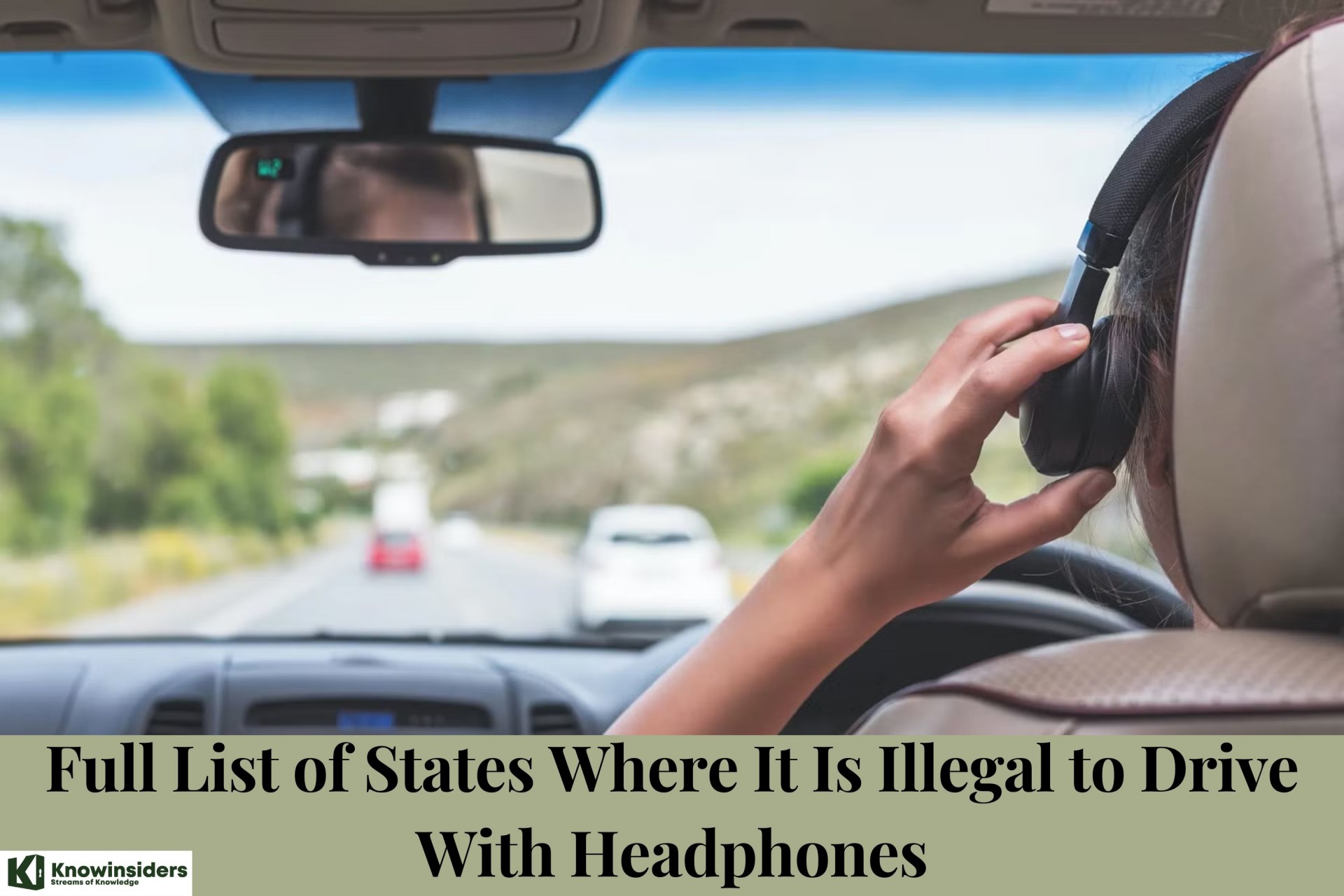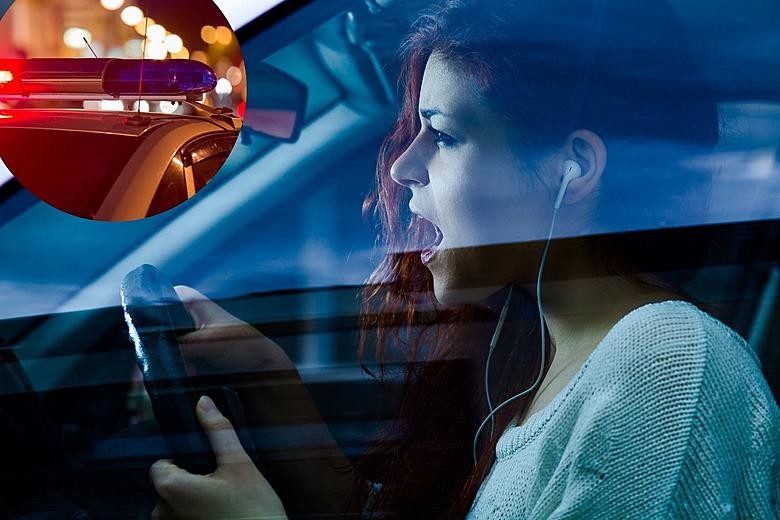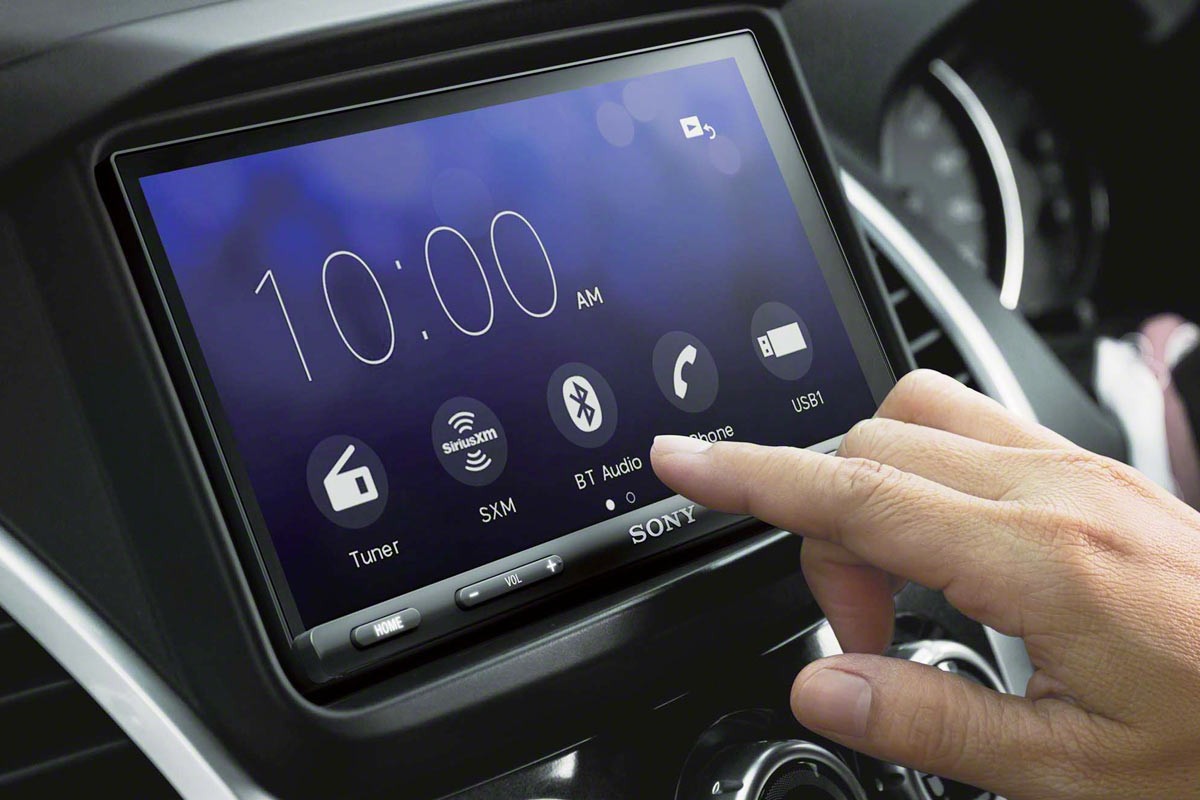Full List of States Where It Is Illegal to Drive With Headphones in the US
| Summary |
In an era where mobile technology and hands-free devices have become ubiquitous, understanding the legal boundaries of their use while driving is crucial for ensuring road safety. One such regulation is the prohibition of driving with headphones.
This practice is deemed dangerous as it can significantly impair a driver’s ability to hear essential sounds, such as emergency vehicle sirens, honking from other vehicles, or even the sounds of pedestrians.
 |
| Full List of States Where It Is Illegal to Drive With Headphones |
Can You Drive with Headphones On?
Driving with headphones on might seem like a convenient way to enjoy your favorite music or podcasts on the go. However, it's important to consider the safety implications and legal restrictions associated with this practice. Here's a comprehensive look at whether you can drive with headphones on and what you need to know to stay within the law and ensure your safety on the road.
Safety Concerns
Wearing headphones while driving can significantly impair your ability to hear essential sounds, such as:
Emergency Vehicle Sirens: Ambulances, fire trucks, and police cars need to be heard clearly so you can move out of your way promptly.
Horns: Other drivers may honk to alert you to potential dangers or to signal their presence.
Pedestrian Warnings: Hearing pedestrians, cyclists, and other non-motorized road users is crucial, especially in urban areas.
Consequences of Driving With Headphones
1. Legal Penalties
There are laws in many states that expressly forbid using headphones that cover both ears while driving. Driving while intoxicated carries a number of legal penalties.
• Fines: In most states, using headphones while driving is illegal. States have different maximum amounts, but for first-time offenders, it can be anywhere from $50 to $200 or more.
• Points on License: If you are detected using headphones while driving in certain states, like California and New York, you may lose points from your record. Too many points can result in higher insurance costs and possibly the suspension of your license.
• Court Appearances: Drivers may be forced to appear in court in extreme circumstances or if the infraction is committed again, which could result in further costs and penalties.
2. Increased Risk of Accidents
Wearing headphones can significantly impair a driver’s ability to hear critical sounds on the road:
• Emergency Vehicle Sirens: Emergency vehicles may be impeded by delays in responding to sirens or failure to hear them.
• Horns from Other Drivers: Not hearing horns can prevent timely reactions to avoid potential hazards.
• Pedestrian Warnings: Collisions can occur more frequently when drivers fail to notice auditory cues from cyclists, pedestrians, and other non-motorized road users.
3. Increased Insurance Premiums
Even if an accident doesn’t occur, getting cited for driving with headphones can lead to higher insurance premiums. Insurance companies view such behavior as high-risk, and repeated offenses can result in dramatic increases in policy costs.
4. Criminal Charges in Severe Cases
If wearing headphones while driving results in serious harm or death, the driver may be prosecuted for reckless driving, manslaughter, or vehicular homicide. Serious penalties apply to these charges, and they include:
• Jail Time: Convictions can lead to months or years in prison, depending on the severity of the incident.
• Hefty Fines: Criminal fines can reach thousands of dollars.
• Permanent Criminal Record: A criminal conviction can have long-term effects on one's personal and professional life, such as making it harder to get work and taking away one's ability to drive.
Read More: The Number of Geographic Area Codes in the United States
Full List of States Where It Is Illegal to Drive With Headphones
 |
| Drive With Headphones |
Several states in the United States have implemented laws that explicitly prohibit or restrict the use of headphones while driving. Here is a comprehensive list of those states and the specific details of their regulations:
• Alaska: Drivers can still be cited under broader distracted driving laws if using headphones leads to unsafe driving behavior.
• California: California Vehicle Code 27400 makes it illegal to drive a motor vehicle or bicycle while wearing any headset covering both ears, or any earplugs in both ears.
• Colorado: It is illegal to use headphones that cover both ears while driving. However, the law allows exceptions for hearing aids.
• Florida: Florida Statute 316.304 prohibits operating a vehicle while wearing headphones, headsets, or other listening devices, except for hearing aids and communication devices.
• Georgia: Georgia Code Section 40-6-250 states that drivers cannot wear headphones that impair their hearing ability, with exceptions for hearing aids and communication devices.
• Illinois: Illinois law forbids drivers from using headphones, headsets, or other listening devices unless they cover only one ear.
• Louisiana: Louisiana Revised Statute 32:295.2 makes it illegal to drive while wearing headphones or any device that impairs hearing.
• Maryland: Maryland Transportation Article 21-1120 restricts the use of headphones covering both ears, with exemptions for hearing aids.
• Massachusetts: Similar to Alaska, drivers in Massachusetts can be penalized under general distracted driving laws if headphone use is deemed to impair driving performance. The state encourages drivers to maintain full auditory awareness while on the road.
• Minnesota: Minnesota law (Statute 169.471) prohibits drivers from wearing headphones that cover both ears, with exceptions for hearing aids and communication devices.
• New York: New York Vehicle and Traffic Law Section 375(24-a) prohibits the use of headsets or earphones covering both ears while driving, with exemptions for hearing aids.
• Ohio: Ohio drivers should be cautious and avoid using headphones to ensure they can hear emergency vehicles, horns, and other critical sounds.
• Pennsylvania: Ddrivers can face consequences under distracted driving statutes if wearing headphones contributes to an accident or impedes safe driving. Staying alert and keeping both ears available for important sounds is advisable.
• Rhode Island: Rhode Island General Laws Section 31-23-51 bans driving with headphones covering both ears.
• Virginia: Virginia Code 46.2-1078 states that no person shall operate a motor vehicle while wearing earphones on or in both ears, with an exception for hearing aids.
• Washington: Washington law (RCW 46.37.480) prohibits drivers from wearing headphones or earbuds in both ears while driving. This law aims to ensure that drivers can hear emergency signals, other vehicles, and potential hazards. The use of single-ear headsets for communication purposes is permitted.
Why These Laws Matter
The rationale behind these laws is rooted in safety. Headphones can severely limit a driver's auditory perception, making it difficult to hear horns, emergency vehicles, or other important sounds that signal potential hazards. By enforcing these regulations, states aim to reduce the risk of accidents caused by distracted driving.
Exceptions and Considerations
Most states with these laws provide exceptions for hearing aids, as they are essential for individuals with hearing impairments. Additionally, some states allow the use of single-ear devices for communication purposes, ensuring that drivers can still maintain situational awareness.
Which States Are Wearing Headphones Legal?
In the following states, there are no specific laws that explicitly prohibit the use of headphones while driving. However, drivers can still be cited under general distracted driving laws if the use of headphones impairs their driving:
• Arkansas: No explicit prohibition against headphones.
• Connecticut: Does not have a specific law against the use of headphones while driving.
• Idaho: No law explicitly banning headphones while driving.
• Kansas: Headphone use is not specifically prohibited.
• Kentucky: No specific law against driving with headphones.
• Missouri: No specific legislation banning headphones.
• Montana: No explicit law against driving with headphones.
• Nebraska: Does not have a specific law prohibiting headphone use while driving.
• Nevada: No specific ban on driving with headphones.
• New Hampshire: Does not explicitly prohibit the use of headphones while driving.
• New Jersey: No specific law against driving with headphones.
• New Mexico: Does not have explicit legislation banning headphone use.
• North Carolina: No specific prohibition on headphones while driving.
• Oklahoma: Does not specifically prohibit headphone use while driving.
• Oregon: No specific law banning headphones.
• South Carolina: Does not have a specific law banning headphones.
• South Dakota: No specific law against driving with headphones.
• Tennessee: No explicit law banning headphone use while driving.
• Texas: No specific prohibition on the use of headphones.
• Vermont: Does not explicitly ban headphones while driving.
• West Virginia: No specific law against driving with headphones.
• Wisconsin: No explicit prohibition against using headphones while driving.
• Wyoming: Does not have a specific law banning headphones.
Alternatives to Headphones
 |
| Car Stereo Systems |
To stay safe and comply with the law, consider the following alternatives:
• Car Stereo Systems: Use your vehicle’s built-in audio system for music or calls.
• Bluetooth and Hands-Free Devices: Many modern cars are equipped with Bluetooth technology, allowing you to make calls and liste
• Single-Ear Headsets: These devices provide a compromise, allowing you to stay connected without completely blocking out external sounds.
FAQs1. Can You Drive with a Bluetooth Headset?While using a Bluetooth headset while driving is prohibited in some states (such as Michigan and California), it may be allowed if it is worn in one ear exclusively. 2. Is using AirPods while driving prohibited?In a small number of states, using airpods while driving is prohibited. Using these listening devices is risky even in situations where it is not against the law. Wearing headphones while driving can distract you from the road and make it difficult to hear surrounding sounds. Driving should keep you safe. You may be responsible for any damages if you cause an accident while using headphones while operating a motor vehicle. 3. Can You Use a Speaker While Driving?As long as you're not using your hands, using the speaker on your phone while driving is normally acceptable. For instance, you can use the Bluetooth feature in your car or the speaker on your phone to have a conversation. |
Conclusion
As technology continues to evolve, staying informed about the legal requirements and safety practices associated with its use is essential for all drivers. Adhering to these laws not only helps avoid legal penalties but also plays a significant role in ensuring the safety of everyone on the road.
If you’re planning a road trip or just commuting to work, remember to keep your headphones off and stay alert.
 What are 'Ghost Guns and Why Are They So Dangerous? What are 'Ghost Guns and Why Are They So Dangerous? In recent years, the term "ghost gun" has entered public discourse with increasing frequency, raising concerns among lawmakers, law enforcement agencies, and the general populace ... |
 Top 10 Tallest Lighthouses That Adorn the Shores of the US Top 10 Tallest Lighthouses That Adorn the Shores of the US In a nation scattered with picturesque coastlines and rugged shores, lighthouses stand as timeless sentinels, guiding mariners safely through treacherous waters. Here, we unveil the ... |
 What a Snob and Top 15 Snobbiest States in the US What a Snob and Top 15 Snobbiest States in the US What a snob! Have you ever met someone and experienced that reaction? Perhaps it's the way they hold their glass of wine, showing you how ... |


























